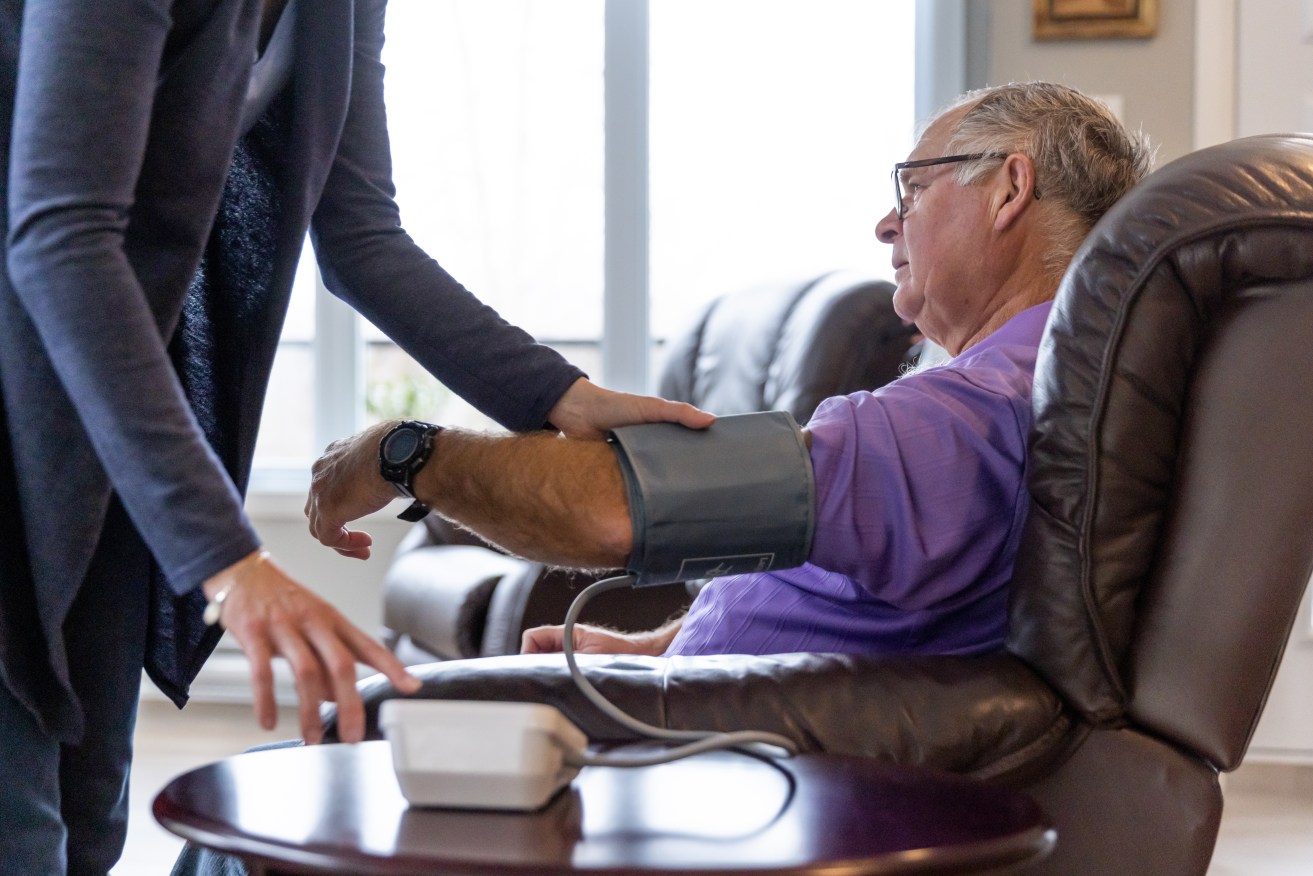Extract from The New Daily

Some older people are sitting for up to 13 hours of their 16-hour waking life. Photo: Getty
Simply standing up more could bring a fall in blood pressure for some people, new research has found.
A recurring health message is: Doing something is better than nothing. But just how little can you do and get some tangible benefit?
If you’ve been sedentary in middle age – and sat from 6.5 to 10 hours a day – you’ll be even less active as you age.
A 2014 UK study found that older adults (people over 60) are “typically sitting” for 65 per cent to 80 per cent of their waking hours.
This means, if they’re in bed for about eight hours a day, then they’re sedentary for up to 13 hours out of the 16 hours of their conscious lives.
Perhaps the most surprising thing is that they’re still alive.
After all, as public health bodies like to remind us: “Sitting is the new smoking.’’
It’s an accurate slogan, given sitting or lying around for too long, day after day, increases your risk of heart disease, stroke and cancer – as well as obesity, deep-vein thrombosis and metabolic disease.
A 2016 study of data from 54 countries concluded that sitting – just sitting for too long – was responsible for 4 per cent of all deaths.
To which the elderly might say: Oh well, I’m getting on.
Or: I don’t expect to live forever … or particularly well.
The authors of a new international study, including Australian researchers, advise that high blood pressure occurs in more than 74 per cent of adults older than 60 years.
Hypertension is what strokes and heart attacks are made from.
The researchers wondered if getting people to simply stand up might lower their blood pressure. And, presumably, give them a fighting chance at avoiding a catastrophic cardiac event.
The new study
According to a statement from the researchers, the study split 283 participants into two groups: 140 underwent an intervention and 143 were the control group.
These were people aged 60 to 89. They all had high blood pressure. They were all overweight or obese, some with a BMI of 50.
The intervention group was given tools to help them reduce the time they spent sitting. These included health coaching, a standing desk and a fitness tracker.
The second group only received health coaching.
The study found those in the sitting intervention group spent about 30 minutes less a day sitting. They also had a reduction in their blood pressure of around 3.48mmHg. Which is something.
According to Medical News Today, the researchers “noted that the drop in blood pressure is comparable to a reduction of 4 mmHg found in studies examining increased physical activity as a way to lower blood pressure”.
Dr Howard Weintraub, the clinical director of the Center for the Prevention of Cardiovascular Disease at NYU Langone Heart in New York, was not involved in the study.
He told Medical News Today:
“Lowering blood pressure by 3.5 mmHg is not enormous, but it is a start and may help. The researchers did exclude people I would like to see included, such as people with diabetes or existing cardiovascular disease.”
He said that he would “lean more toward suggesting a short walk. However, this group is very overweight and starting with a few minutes of activity while standing might be a good start”.
No comments:
Post a Comment